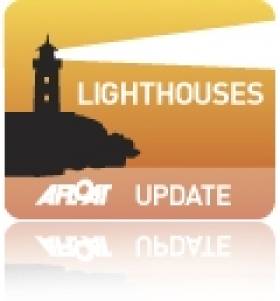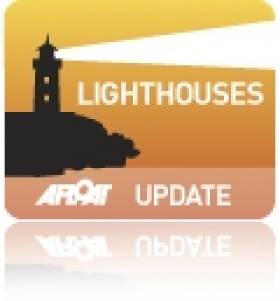Displaying items by tag: Inisheer lighthouse
New LED Light on Inisheer and Exhibition of Old Plassy Wreck
#PlassyWreckExhibition- As previously reported on Afloat.ie, Inisheer Lighthouse on the easternmost of the Aran Islands, was installed with a new light emitting diode (LED) light by the Commissioners of Irish Lights (CIL) last month.
The Iighthouse is a highly important Aid to Navigation (AtoN) as this safeguards the considerable traffic between Inisheer and Co. Clare. It also marks the south-eastern end of the Aran Islands and the western side of the southern approach route to Galway Bay.
It stands 34 metres and this is to ensure visibility of the light due to the low-lying nature of the Island. A red sector of the light delineates the potential danger of Finnis Rock lying to the east.
As previously reported on Afloat.ie, it was during a passage of the Plassy, a Limerick Steamship Co. owned general cargoship which ran aground in a severe storm off Finnis Rock in 1960.
The wreck of the vessel is of TV 'Father Ted' fame, having featured in the opening credits and is the theme for an exhibition 'Art of Rust – From Rust to Art' which this afternoon opens (from 5pm till 7pm) in the National Maritime Museum of Ireland (NMMI) Dun Laoghaire.
The Commissioners of Irish Lights (CIL) have unveiled a new light emitting diode (LED) light at Inisheer lighthouse on Wednesday 21st May 2014. Inisheer Lighthouse is a highly important Aid to Navigation (AtoN). This AtoN safeguards the considerable traffic between Inisheer and Co. Clare. It also marks the south-eastern end of the Aran Islands and the western side of the southern approach route to Galway Bay.
This project will provide reliable and low maintenance operational needs for Inisheer lighthouse for the next 20 years while achieving an annual reduction in operation costs for CIL of approximately 16%. The exhibition of the new light marks a significant milestone within the major Capital Refurbishment Project currently being carried out at the lighthouse.
The tower of Inisheer is 34 meters in height. This is to ensure visibility of the light due to the low lying nature of the Island. A red sector of the light delineates the potential danger of Finnis Rock lying the East. The project includes replacing the optic lamp with a new flashing LED light source in the existing lens. The light range is now reduced from 20White, 16Red to 18White, 11Red but will keep the same flashing character. The rotating mirror located in the tower has been removed and preserved for heritage purposes. A 6kW Standby Diesel Generator which previously provided power in the event of a mains outage has been removed and standby power is now provided by duplicated 24V batteries and chargers of total capacity to provide 6 days operation. The Radar Beacon (RACON) has also been replaced.
The removal of the Standby Generator will reduce maintenance requirements at the station as well as the need for fuel delivery. The installation of the LED light-source also removes the need to change lamps and reduces the number of visits by the Attendant to the station. Power requirements to the station have also been reduced resulting in lower electricity costs. The installation of an Automatic Identification System (AIS) unit for monitoring eliminates communications costs.
With the help of modern technology, CIL consistently delivers a low-maintenance, low-energy and carbon-emission reducing Aids to Navigation service around the Coast of Ireland.

























































